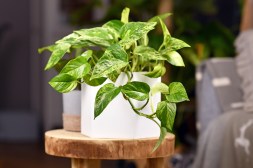Watering Indoor Palms: How to Keep Your Plants Thriving
Indoor palms can add a touch of tropical elegance to your home, but keeping them healthy and thriving requires a bit of knowledge about their light and water needs. In this guide, we’ll explore the best practices for watering indoor palms, ensuring they receive the right amount of moisture while also considering their light requirements.
Understanding Palm Watering Needs
Indoor palms are diverse and come from different climates, which means their watering needs can vary. Generally, palms prefer consistently moist soil but do not like to sit in water. It’s crucial to understand that over-watering is one of the most common mistakes when caring for these plants. Palms need soil that drains well, allowing excess moisture to escape while still retaining some for the roots.

Signs Your Palm Needs Water
One way to determine if your palm needs water is by checking the top inch of soil—if it feels dry, it’s time to water. Additionally, look for signs such as drooping fronds or yellowing leaves; these can indicate both over-watering and under-watering issues. A healthy palm should have bright green leaves and stand upright without wilting.
Best Practices for Watering Indoor Palms
When you do water your indoor palm, ensure you do so thoroughly until water drains out of the bottom of the pot. This method encourages roots to grow deeper as they search for moisture. During active growth periods (spring and summer), palms may require more frequent watering compared to the fall and winter months when their growth slows down.
Light Requirements for Thriving Palms
In addition to proper watering techniques, understanding light conditions is vital for indoor palms. Most varieties thrive in bright indirect light but can adapt to lower light levels. However, if your palm doesn’t get enough light, its growth may slow down or become leggy with sparse leaves. Consider rotating your plant every few weeks so all sides receive equal exposure.
Creating an Ideal Environment for Indoor Palms
To create a nurturing environment for your indoor palm, maintain humidity levels with regular misting or using a pebble tray filled with water underneath the pot (ensure the pot isn’t sitting directly in water). Additionally, choose a well-draining potting mix designed specifically for tropical plants or houseplants—a mix that retains some moisture while providing adequate drainage ensures optimal health throughout seasons.
By following these simple guidelines on watering and lighting conditions specific to indoor palms, you can enjoy lush greenery in your home environment year-round. Remember that each species may have unique preferences; always take time to observe how your plants respond and adjust care accordingly.
This text was generated using a large language model, and select text has been reviewed and moderated for purposes such as readability.


